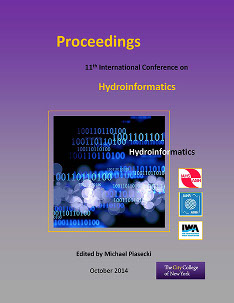Document Type
Presentation
Publication Date
8-1-2014
Abstract
The spatial interpolation results of the channel topography by the different methods have a very important effect on the topographic distribution of river channel. The study shows that the conventional interpolation methods such as TIN, Kriging and IDW methods can give good results with reasonable parameters when the sampling data is dense enough. However, the spatial distribution of source data sampled by the classical cross-section method in hydrological measurement may have large and small spaces along the longitudinal and transverse directions of river channel respectively, and then these interpolation methods above may give the unreasonable interpolation results. In this case, a new interpolation method named Linear Interpolation on the Fitted Curvilinear Grid of the river channel (LIFCG) is proposed, in which the river regime is considered by a set of curvilinear grids. The topography along the rows of grid dots which have same position with cross sections where the topography data is measured is firstly checked out and calculated by using linear interpolation method, then the topography at other grid nodes are interpolated along the longitudinal lines by using linear interpolation method. The application shows that the new method can give the more reasonable results than TIN, IDW and Kriging methods. In further, based on the new method, the river thalweg is firstly calculated and used to regenerate the channel fitted non-orthogonal curvilinear grid and then applied the grid to interpolate when there are complicated distribution and large spatial variation of channel topography and plane shape. The applications in the curved and braided natural channel’s interpolation show the interpolation by the new method with coupling of the river thalweg is more reasonable at some degree than the method without coupling of the river thalweg and other classical method when sparse cross-section measured sampling data is used.



Comments
Session R49, Data Processing: Reconstruction, Gap Filling, and Error Corrections